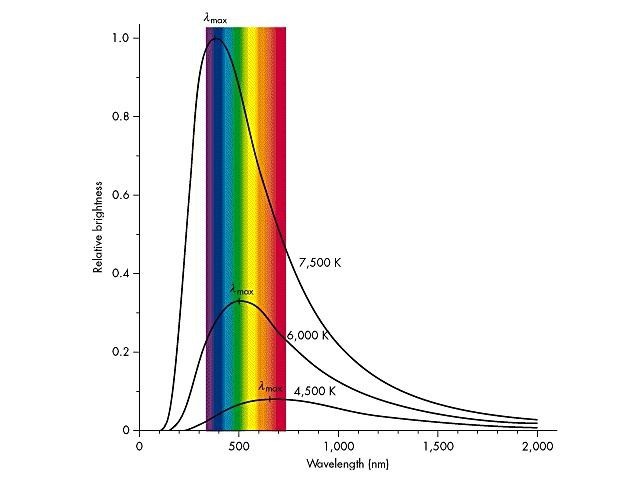An absolutely black body is called such because it absorbs all radiation incident on it (or rather, into it) both in the visible spectrum and beyond. But if the body does not heat up, the energy is re-emitted back. This radiation, emitted by a completely black body, is of particular interest. The first attempts to study its properties were made even before the model itself.
At the beginning of the 19th century, John Leslie conducted experiments with various substances. As it turned out, black soot not only absorbs all visible light incident on it. She radiated in the infrared range much stronger than other, lighter, substances. It was thermal radiation, which differs from all other types in several properties. Radiation of a black body is balanced, uniform, occurs without energy transfer and depends only on body temperature.
At a sufficiently high temperature of the object, thermal radiation becomes visible, and then any body, including absolutely black, acquires color.
Such a unique object, which emits an exclusively certain type of energy, could not fail to attract attention. Since we are talking about thermal radiation, the first formulas and theories regarding how the spectrum should look like were proposed in the framework of thermodynamics. Classical thermodynamics was able to determine at what wavelength the maximum radiation should be at a given temperature, in which direction and how much it will shift when heated and cooled. However, it was not possible to predict what the energy distribution is in the spectrum of a black body at all wavelengths and, in particular, in the ultraviolet range.

According to the ideas of classical thermodynamics, energy can be radiated by any portions, including arbitrarily small. But for an absolutely black body to emit at short wavelengths, the energy of some of its particles must be very large, and in the region of ultrashort waves it would go to infinity. In reality, this is impossible, infinity appeared in the equations and was called the ultraviolet disaster. Only Planck 's theory that energy can be emitted by discrete portions - quanta - helped solve the difficulty. Today's equations of thermodynamics are special cases of equations of quantum physics.

Initially, a completely black body was presented as a cavity with a narrow hole. Radiation from the outside enters such a cavity and is absorbed by the walls. In this case, the spectrum of radiation from the entrance to the cave, the openings of the well, the window into the dark room on a sunny day, etc. is similar to the spectrum of radiation that an absolutely black body should possess. But most of all, the relict radiation spectra of the Universe and stars, including the Sun, coincide with it.
It is safe to say that the more particles in a given object with different energies, the stronger its radiation will resemble a blackbody. The energy distribution curve in the spectrum of an absolutely black body reflects statistical laws in the system of these particles, with the only correction that the energy transmitted during interactions is discrete.